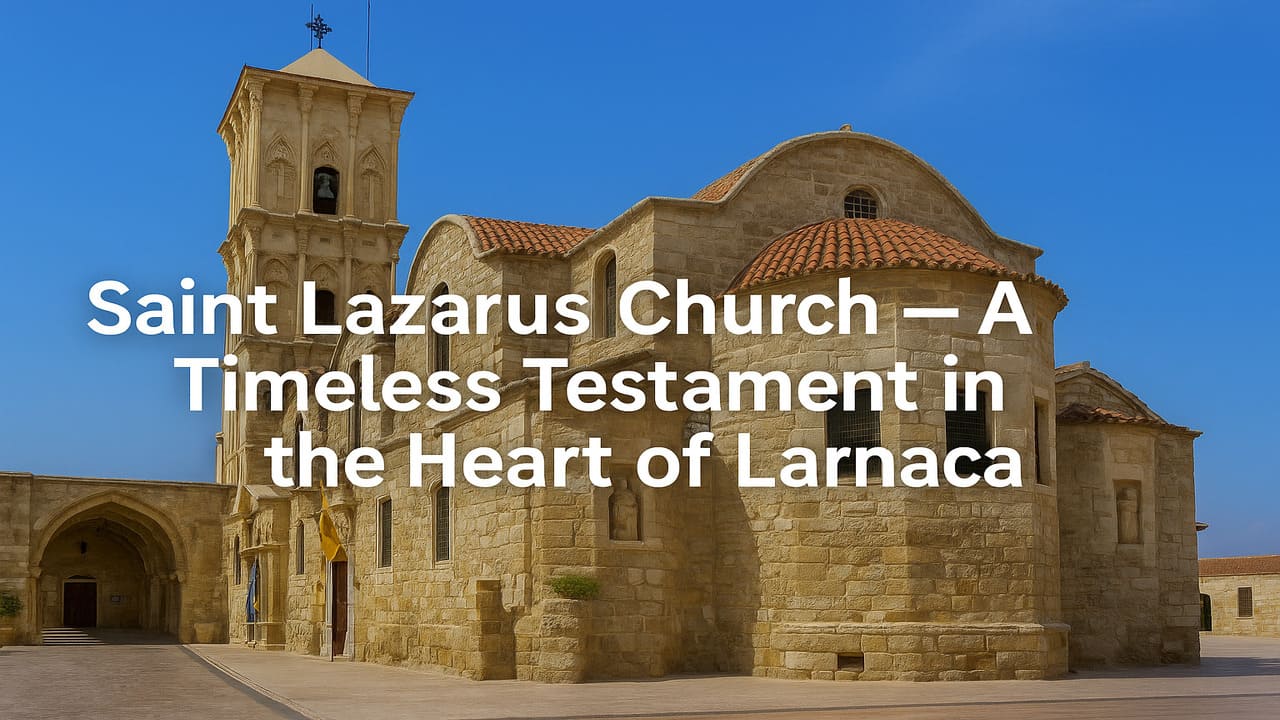
Thorn Ville Church – Stands the Church of Saint Lazarus a sacred structure built over the reputed tomb of Lazarus, the man Jesus raised from the dead. Constructed in the 9th century, this church remains one of the most important landmarks in Cypriot Christianity, drawing pilgrims, historians, and travelers alike.
Its unassuming sandstone walls and Byzantine architecture house centuries of spiritual devotion and historical resilience, surviving earthquakes, foreign occupations, and regime changes yet still standing as a quiet miracle in stone.
According to Eastern Orthodox tradition, Lazarus of Bethany after being resurrect by Jesus as record in the Gospel of John, chapter 11) fled persecution in Judea. He eventually arrived in Cyprus, where he lived for another 30 years and became the first Bishop of Kition, the ancient name for Larnaca.
His second burial place, now believe to be beneath the present-day church, is marke by an ancient tombstone inscribe with: “Lazarus, friend of Christ.” This legacy has made the site a deeply revered location, especially for Orthodox and Catholic Christians.
Read More : Churches of Cappadocia: Where Faith Was Carved Into Stone
Built around 890 AD by order of Byzantine Emperor Leo VI, the Saint Lazarus Chruch is a prime example of Byzantine architecture fuse with local Cypriot influences. Construct from local limestone, the church was build over Lazarus’s tomb and was mean to enshrine and honor his legacy in perpetuity.
Key architectural features include:
Beneath the main floor, visitors can descend into a stone crypt where Lazarus’s tomb remains a powerful, silent testimony to the legend that shaped the city’s spiritual identity.
The Church of Saint Lazarus has lived through Cyprus’s turbulent past. After the Ottoman conquest in 1571, the church was convert into a mosque for a time, but it was eventually return to Christian hands and restored to its former function.
In the 17th century, a portion of Saint Lazarus’s relics were sent to Constantinople (now Istanbul), while other remains were later discover inside a marble sarcophagus during renovations in 1972.
Today, the church is a fully restored and functioning Greek Orthodox site, hosting liturgies, baptisms, and annual festivals such as Lazarus Saturday celebrated one week before Easter with processions and traditional Cypriot offerings.
Also Read : I Know What You Did Last Summer: A Requel That Misses
One of the most remarkable features inside the church is the ornate wooden iconostasis, carved in the late 18th century. It features scenes from the life of Christ, the Virgin Mary, and various saints including, of course, Saint Lazarus himself.
The icons are paint in rich Byzantine hues of gold, red, and deep blue, lit by flickering candles and chandeliers that lend the space a mystical, reverent atmosphere.
Beyond its religious importance, the church also functions as a cultural centerpiece, hosting occasional concerts and exhibitions that celebrate Cyprus’s spiritual and artistic heritage.
As Cyprus continues to develop its cultural tourism, the Church of Saint Lazarus stands poised to become not only a site of pilgrimage but a focal point for heritage education. Plans are in motion to digitize its interior through 3D scanning, allowing virtual access for global visitors and scholars.
In collaboration with UNESCO and local authorities, preservationists are working to fortify the foundations, protect fragile art, and restore ancient masonry affected by time and moisture.
There’s also growing interest in developing interfaith tourism routes that connect the Church of Saint Lazarus with other sacred sites in Cyprus like the Hala Sultan Tekke Mosque and the Stavrovouni Monastery promoting peaceful coexistence and shared heritage.
Thornville Church - Your Source for Biblical Inspiration - The miracle of spiritual deliverance appeared in Philippi when Paul freed…
Thornville Church - Your Source for Biblical Inspiration - Historians now highlight how women in early church shaped theology, leadership,…
Thornville Church - Your Source for Biblical Inspiration highlights how church orientation toward east shapes Christian worship, architectural symbolism, and…
Thornville Church - Your Source for Biblical Inspiration reports that recent necropolis discoveries at Colossae are reshaping how scholars read…
Thornville Church - Your Source for Biblical Inspiration highlights how oldest church sites 2025 continue to stand as living testaments…
Thornville Church - Your Source for Biblical Inspiration highlights how ancient churches and sites continue to attract pilgrims, travelers, and…